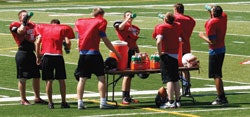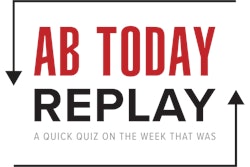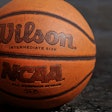As high school injury data mounts, sports medicine gains unprecedented focus in minimizing risk.
 SUPERVISED DRINKING McMinnville (Ore.) High School football players are shown hydrating just days after 19 of the team's players were diagnosed with rhabdomyolysis during a summertime training session that was unregulated by the state athletic association.
SUPERVISED DRINKING McMinnville (Ore.) High School football players are shown hydrating just days after 19 of the team's players were diagnosed with rhabdomyolysis during a summertime training session that was unregulated by the state athletic association.Since 1982, the National Federation of State High School Associations has published "Rules Changes Affecting Risk," a living document that contains hundreds of risk-management guidelines specific to individual sports. From a historical perspective, the reference guide provides snapshots of the predominant ways of thinking about sports medicine issues at a given point in time. While important, many of the early rules - such as requiring baseball catchers to wear protective masks when warming up pitchers or requiring football goalposts to be padded - now seem almost quaint from a risk-management perspective.
Naturally, as the fields of sports medicine and risk management have grown more complex over the past three decades, the NFHS rules have gotten progressively more specific. While a rule established in 1985 may focus on what type of safety equipment is allowed or required, a clarification of that rule in 2009 may go into detail about what materials that safety equipment should be composed of or how it should be affixed to other pieces of equipment worn by the athlete.
But the overall focus of the rules has evolved, too, according to Michael Koester, chairman of the NFHS Sports Medicine Advisory Committee. "When these types of discussions started, they really reflected a lot of where sports medicine was at the time, which was often in the realm of the orthopedic surgeon," Koester says. "The discussions focused much more on on-the-field injuries - ways to decrease knee injuries or decrease the number of fractures."
Now, many of the rules either are revisions of older rules or address much larger medical issues that may not even be related to specific sports - concussions being a prime example. "You're seeing issues and regulations now for things like heat illness, proper hydration techniques, hours of practice allowed in a day or week," says Koester. "And even though acute injuries are still a problem, there is more of a focus on the chronic injuries - elbow or shoulder injuries in baseball, or really any type of overuse injuries that we're seeing in young athletes."
The rules are a reflection of who's making them, too. Forty-six NFHS-member state athletic associations now have some form of sports medicine committee serving them in an advisory capacity. (Michigan, North Dakota, Oklahoma and Vermont are the exceptions, while Kansas has an alternate system for addressing sports medicine issues.)
Bob Colgate, the NFHS liaison to the national Sports Medicine Advisory Committee - which was formed in 1996 and is composed of 14 voting members and two non-voting members, including physicians, certified athletic trainers, state association representatives, researchers and representatives of NFHS coaches' and officials' committees - says approximately 15 of those state-level sports medicine committees have formed within the past four years alone.
The reason, he says, is that more state associations are seeing the value of having a committee of experts to provide guidance during a time of heightened media awareness and increased liability related to sports injuries. "Everyone is trying to minimize risk, and having a group to assist those state associations in making sports medicine-related decisions is key," Colgate says. "A case in point is concussions. This year, when we revised our rules language, we left it up to the states to, one, specify who the appropriate healthcare professionals would be in making the determination on athletes returning to play and, two, what those return-to-play protocols will be, sport by sport. To come up with that information, you're going to need guidance from outside individuals."
Also aiding the push for more of a sports medicine focus on the state level is the relatively newfound availability of data that is specific to high school athletics. For the past five years, the Center for Injury Research and Policy at the Nationwide Children's Hospital in Columbus, Ohio, has been using a surveillance system known as High School RIO (Reporting Information Online), through which certified athletic trainers nationwide submit injury data through an easy-to-use online platform for 18 different boys' and girls' sports.
"For the first time, we're really getting a handle on what the problems are," Koester says. "For years, there were not many good studies showing us injury rates in high school athletics. The best we had was NCAA data that we extrapolated to high school."
For instance, says Koester, "We now know that in high school football in 2009, 60 percent of concussions involved a helmet-to-helmet hit. That kind of information clearly tells us that we need to try to limit helmet-to-helmet contact. We need the coaches to teach it and the referees to call it." Koester says sports medicine experts are now able to see even more specific trends such as "what injuries are occurring during kickoff returns in football" or "what injuries are occurring in the paint area in basketball."
Koester and Colgate agree, however, that the data is only valuable insomuch as it's being used to achieve specific ends - minimizing injuries to student-athletes and protecting the parties providing those athletic opportunities from risk. That's why the NFHS Sports Medicine Advisory Committee not only serves as a resource to individual state associations and their sports information committees, it also actively disseminates position statements and promotes guidelines that can aid such organizations in policy- and rule-making.
As an example, many state associations and their respective sports medicine committees have followed the lead of the NFHS on the concussion issue by having their member schools adhere to the "Suggested Guidelines For Management of Concussions In Sports." Presented by the NFHS as a resource for parents, coaches and other people dealing with concussions who may not be trained medical professionals, the document provides clear overviews of signs and symptoms of concussions, but it goes into considerably more detail in providing guidelines for sideline decision-making once a concussion has occurred. Since being introduced by the NFHS in April 2009, language in the guidelines has subsequently flowed throughout the country, through state associations, down to their member school districts, and even up to state legislatures.
In August, the NFHS also introduced a 20-minute online course endorsed by The Centers for Disease Control called "Concussions In Sports - What You Need to Know," which is available free to players, coaches, parents, officials or anyone else involved in high school athletics. The Massachusetts Interscholastic Athletic Association, for example - upon the recommendation of its Sports Medicine Committee - has made the course mandatory for players and coaches as part of the state's new concussion legislation.
"Part of this is being driven at the federation level, but if you look at an issue like concussions, these states are looking to step up," says Koester. "State associations are going to want to get all their information and data in place if legislation is going to come about."
While each state differs in how much authority - if any - it allows individual state athletic associations in the law-making process, Koester says the expert advisory nature of sports medicine committees tends to cause little pushback from larger organizations. Instead, that pushback to rule changes or other regulations can come from individual schools or districts, many of which may not have access to qualified certified athletic trainers.
"There are a lot of cases on the local level where people don't see sports medicine as much of an issue, and even if they do, then funding is a problem," Koester says. "The best thing any high school can do from a safety standpoint is hire a certified athletic trainer. But at a $50,000 to $60,000 cost, there are not a lot of schools that are going to be willing to do that."
That's why Koester is among the medical experts who favor more regulation of sports medicine issues throughout the year at the state level. To support that notion, Koester points to a recent incident that took place in Oregon, where he is also chairman of the Oregon School Activities Association's Medical Aspects of Sports Committee.
In late August, approximately two dozen McMinnville High School football players complaining of extreme pain and swelling in various muscles were hospitalized after participating in the football program's "immersion camp." The players - three of whom required surgery - were diagnosed with rhabdomyolysis, which was attributed to an overly strenuous workout in a hot workout environment with inadequate hydration.
Despite the fact that the OSAA is afforded some regulatory control among its member school districts during school practices, the camp took place during summertime, when OSAA rules do not apply. The OSAA prohibits full contact during a school's first three days of football practice, yet has no control over activities such as summertime football camps. "Those kids step off the bus, put their pads on and start whaling on each other," Koester told The Oregonian days after the McMinnville incident.
However unfortunate, incidents such as the one that took place in McMinnville can help spur sports medicine professionals to action. An update on the McMinnville case made the October meeting agenda for the NFHS Sports Medicine Advisory Committee.
"You're starting to see sports medicine having a greater influence," says Colgate, "and the fact that we now have 46 states with a sports medicine advisory committee speaks to that."



































